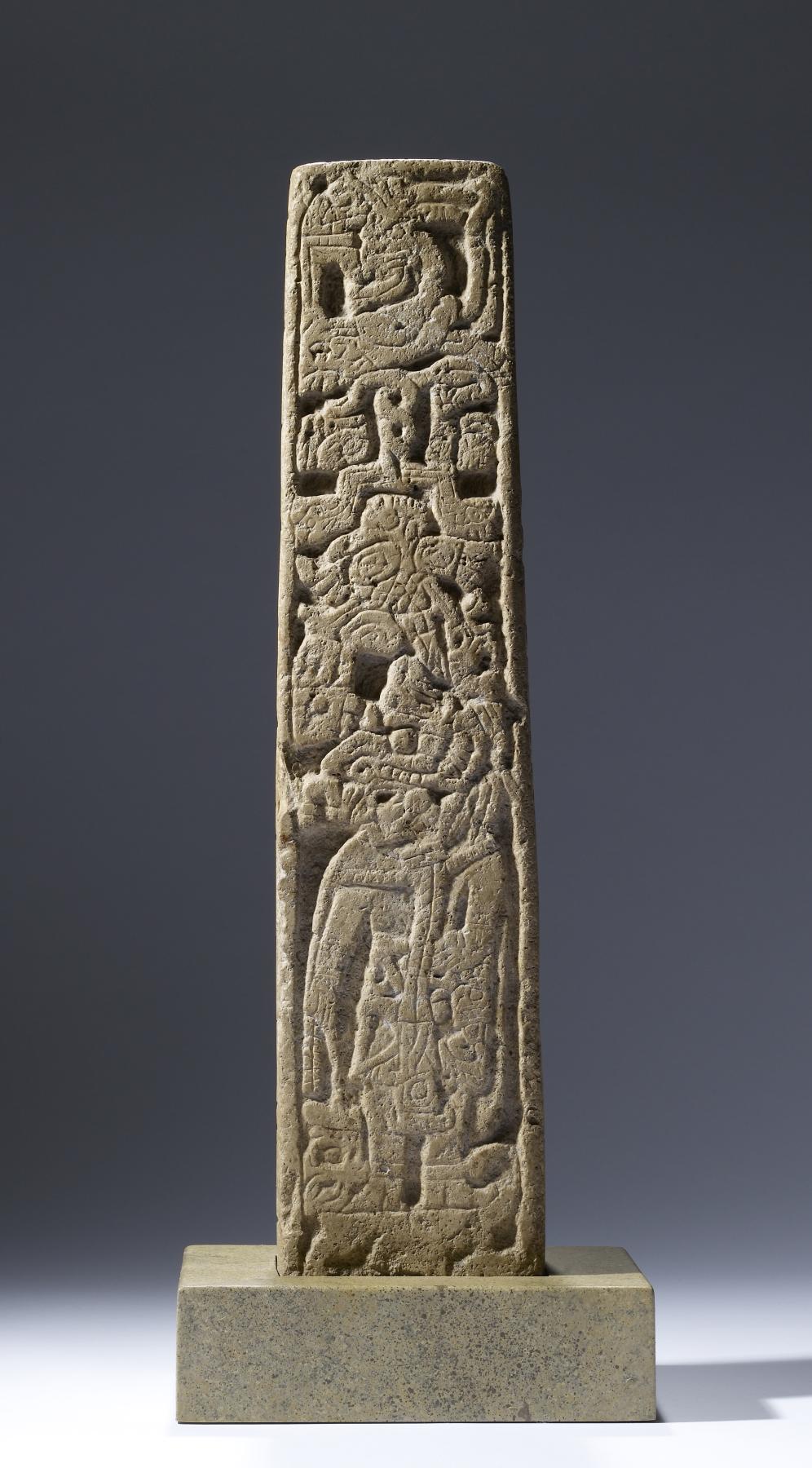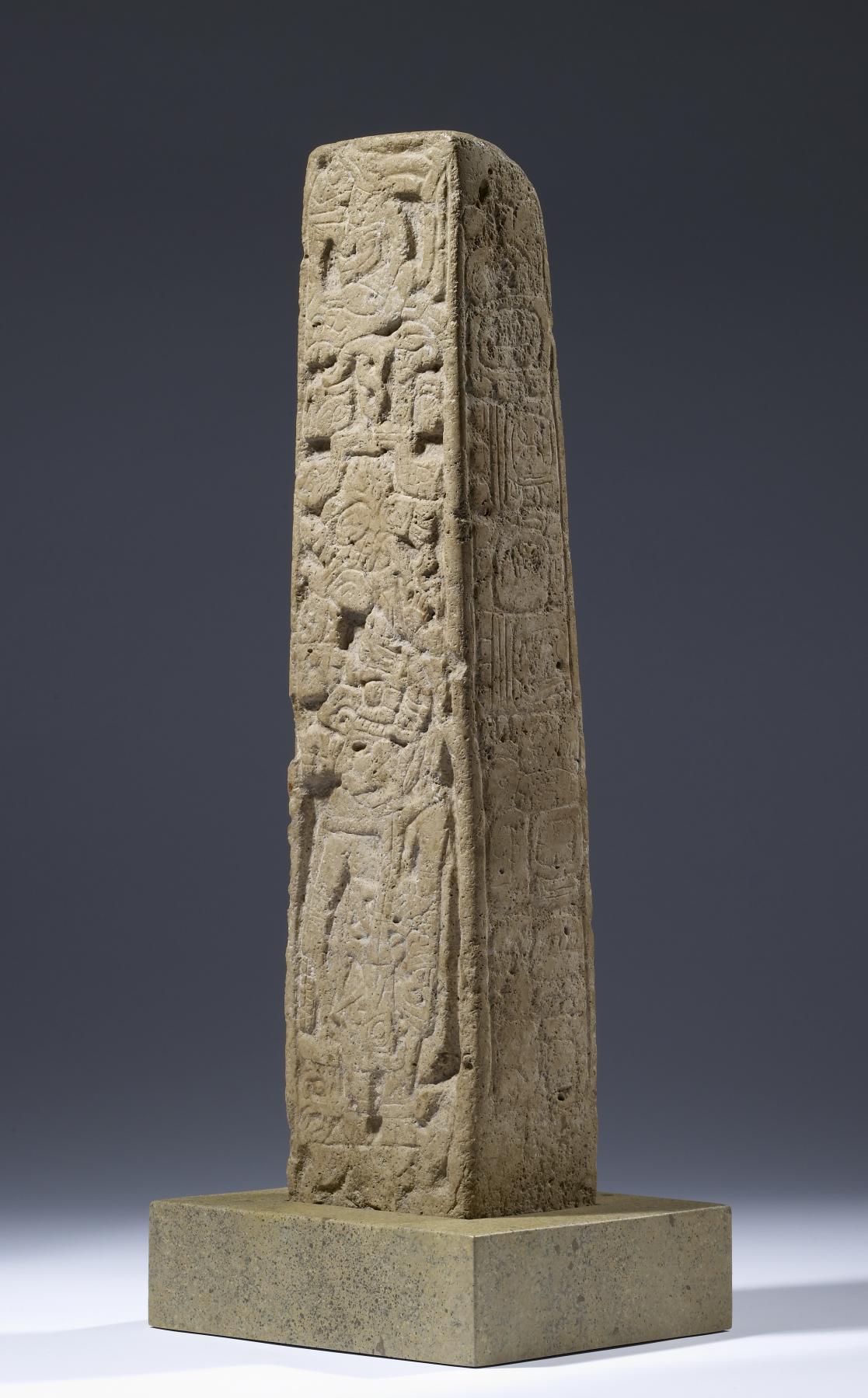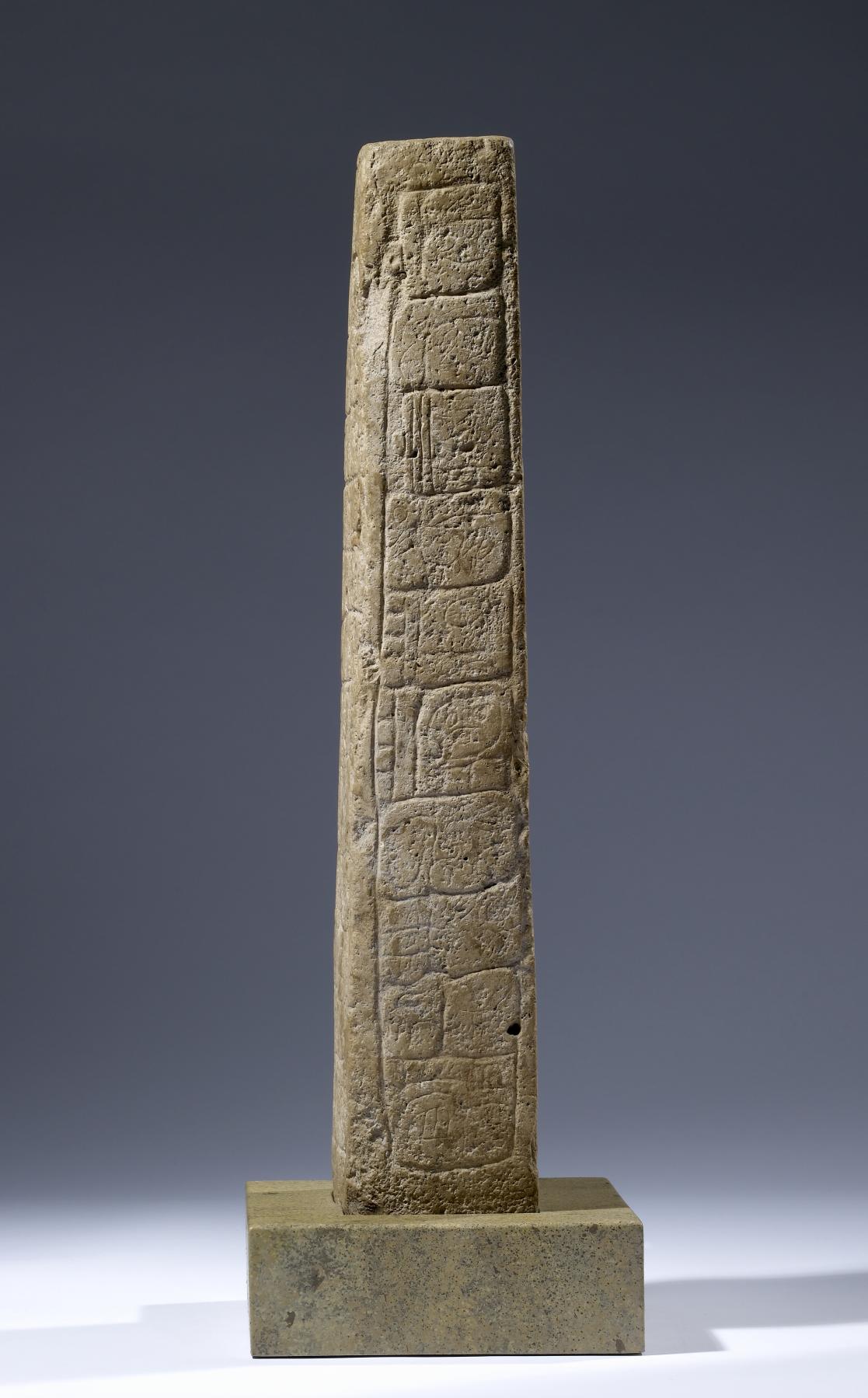Miniature Stela
(Ancient Americas )
This miniature stela reportedly came from the archaeological site of Uaymil, a modestly-sized settlement on a small island off the north coast of Campeche. In spite of its relatively small size, Uaymil played an important role as a transshipment zone during the Late Classic and Early Postclassic periods (650-1300 CE), facilitating the movement of goods throughout southern Mesoamerica. Miniature stelae are rare and are found exclusively in Campeche and Yucatan. They likely were placed on altars or benches inside administrative or ancestral shrine buildings, although this one may have been buried as an offering.
It is carved on all four sides, the front showing an elaborately dressed ruler with a supernatural bird floating above him. While the glyphs are eroded, a new decipherment of them suggests that this small monument commemorated a terrible drought in the area in 809 CE and the itz’aat, or wise man, who performed rituals that ended the drought. Although we do not know his precise name, glyphs tell us that this itz’aat installed this stela on June 25, 810.
Provenance
Provenance (from the French provenir, 'to come from/forth') is the chronology of the ownership, custody, or location of a historical object. Learn more about provenance at the Walters.
Acquired by J. Guy Puerto, New York City; purchased by John G. Bourne, Santa Fe, New Mexico, 1961; given to Walters Art Museum, 2013.
Exhibitions
| 2012-2013 | Exploring Art of the Ancient Americas: The John Bourne Collection Gift. The Walters Art Museum, Baltimore; Frist Center for the Visual Arts, Nashville. |
Geographies
Mexico, Campeche, Uaymil (Place of Origin)
Measurements
H: 22 1/4 x W: 5 1/16 x D: 3 13/16 in. (56.5 x 12.8 x 9.7 cm)
Credit Line
Gift of John G. Bourne, 2013
Location in Museum
Not on view
Accession Number
In libraries, galleries, museums, and archives, an accession number is a unique identifier assigned to each object in the collection.
In libraries, galleries, museums, and archives, an accession number is a unique identifier assigned to each object in the collection.
2009.20.196










